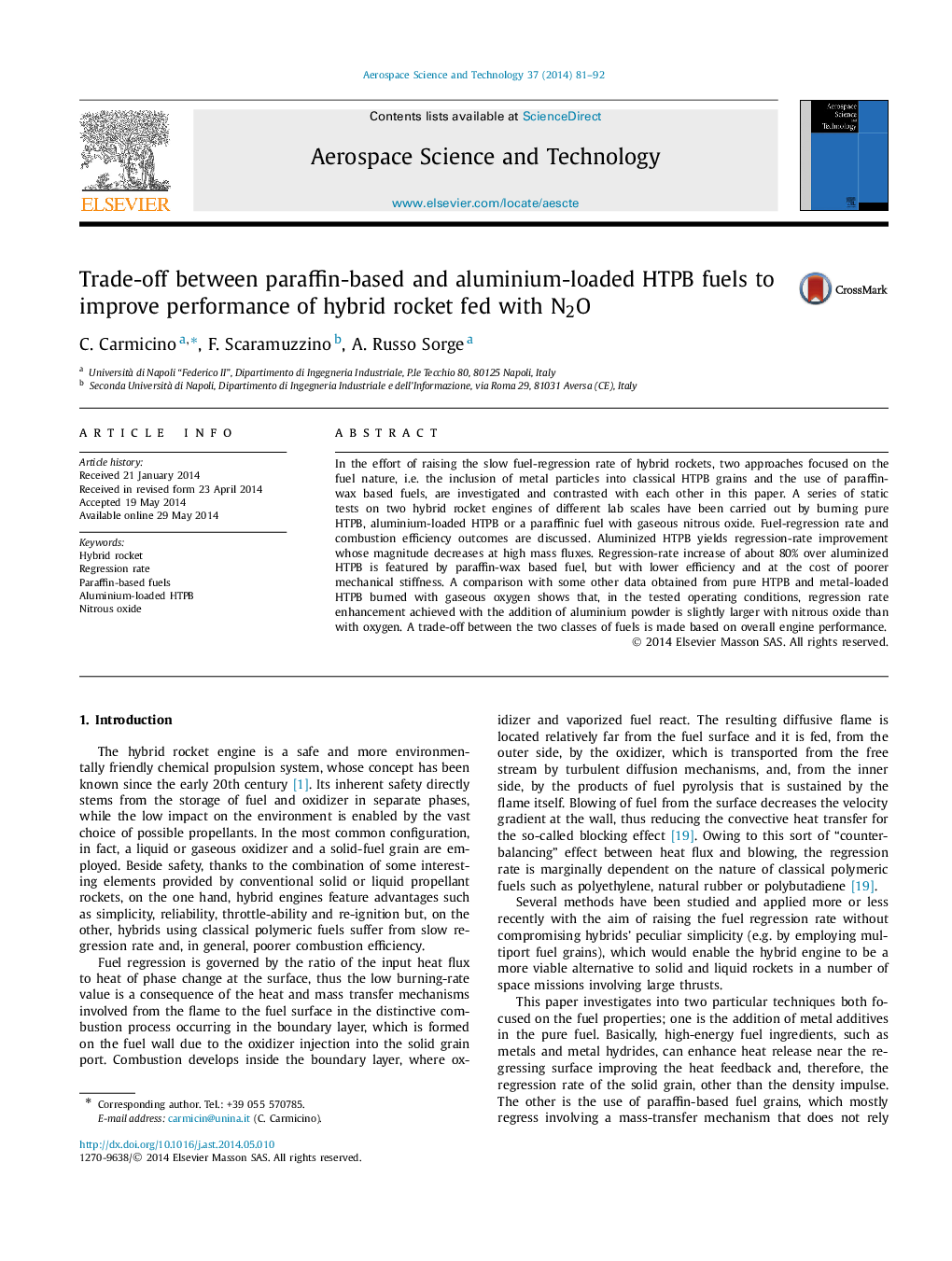| Article ID | Journal | Published Year | Pages | File Type |
|---|---|---|---|---|
| 1718035 | Aerospace Science and Technology | 2014 | 12 Pages |
In the effort of raising the slow fuel-regression rate of hybrid rockets, two approaches focused on the fuel nature, i.e. the inclusion of metal particles into classical HTPB grains and the use of paraffin-wax based fuels, are investigated and contrasted with each other in this paper. A series of static tests on two hybrid rocket engines of different lab scales have been carried out by burning pure HTPB, aluminium-loaded HTPB or a paraffinic fuel with gaseous nitrous oxide. Fuel-regression rate and combustion efficiency outcomes are discussed. Aluminized HTPB yields regression-rate improvement whose magnitude decreases at high mass fluxes. Regression-rate increase of about 80% over aluminized HTPB is featured by paraffin-wax based fuel, but with lower efficiency and at the cost of poorer mechanical stiffness. A comparison with some other data obtained from pure HTPB and metal-loaded HTPB burned with gaseous oxygen shows that, in the tested operating conditions, regression rate enhancement achieved with the addition of aluminium powder is slightly larger with nitrous oxide than with oxygen. A trade-off between the two classes of fuels is made based on overall engine performance.
